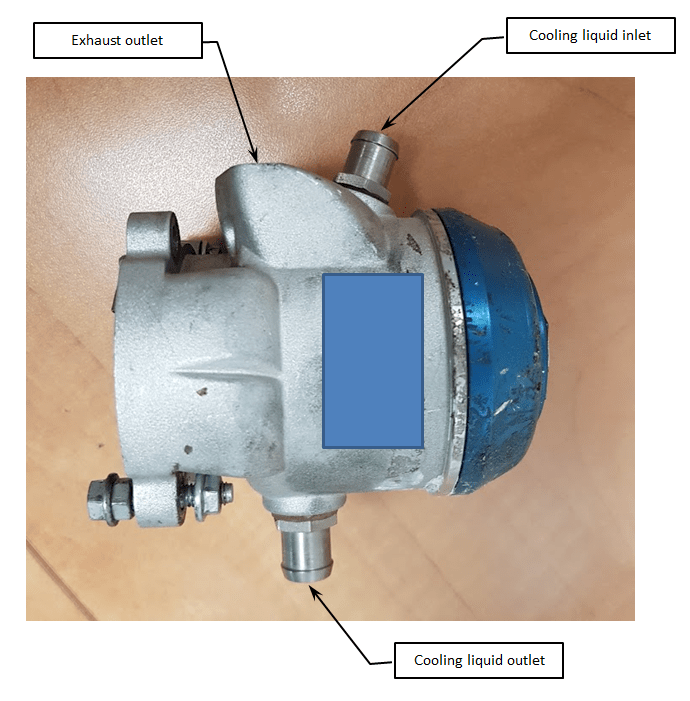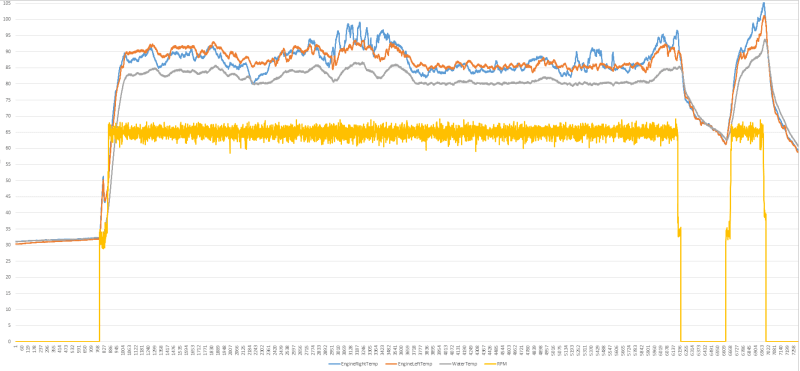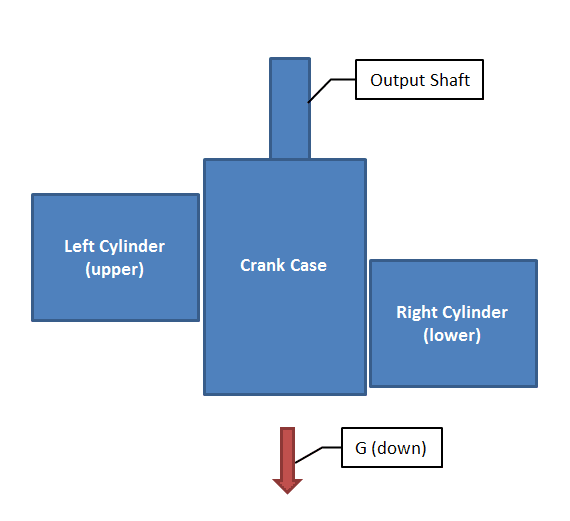dimachorny
New member
Hello,
I have two stroke water cooled engine and from time to time there are cooling issues with it.
Here some relevant information:
- Configuration - boxer two cylinders about 120 cc total displacement
- The engine max. power - 11 HP
- Working speed - 6500 RPM (constant, 1000 RPM below the max.)
- Continuous power consumption - about 7 HP
- Fuel/oil mixture - 95 Octane, 3% oil by weight
- Liquid coolant - 50/50 antifreeze coolant
- The cooling water cycle is as following: the cooled water from radiator via water pump -> enters the cylinders next to exhaust outlet -> pass through the cylinders -> leaves the cylinders via far nipple from the exhaust outlet -> enters the radiator (see attached picture)
- The CHT measured on the sylinder surface and not below the plug
- The engine has one carburetor common for both cylinders
- There are two independed electronic Ignition Control Units connected to one common pick-up sensor. Each cylinder has a single plug connected to its own ICU.
The temperature issue is: one of the cylinders (the lower one) from time to time has nonstable temperature with oscillations (see attached plot of 1.5 hours of running). It is not measurement issue since beside this the engine sounds different and loose its performance.
The questions are:
1. What may lead to such temperature oscillations only in one cylinder?
2. What is the importance in the way that cooling liquid pass through the cylinder:
- from hot side next to the exhaust outlet to the cool side
- from cool side far from the exhaust outlet and leaves the cylinder next to it
Thank you a lot

Yellow - RPM x100
Gray - Water [°C]
Orange - Left Cylinder [°C]
Blue - Right Cylinder [°C]

I have two stroke water cooled engine and from time to time there are cooling issues with it.
Here some relevant information:
- Configuration - boxer two cylinders about 120 cc total displacement
- The engine max. power - 11 HP
- Working speed - 6500 RPM (constant, 1000 RPM below the max.)
- Continuous power consumption - about 7 HP
- Fuel/oil mixture - 95 Octane, 3% oil by weight
- Liquid coolant - 50/50 antifreeze coolant
- The cooling water cycle is as following: the cooled water from radiator via water pump -> enters the cylinders next to exhaust outlet -> pass through the cylinders -> leaves the cylinders via far nipple from the exhaust outlet -> enters the radiator (see attached picture)
- The CHT measured on the sylinder surface and not below the plug
- The engine has one carburetor common for both cylinders
- There are two independed electronic Ignition Control Units connected to one common pick-up sensor. Each cylinder has a single plug connected to its own ICU.
The temperature issue is: one of the cylinders (the lower one) from time to time has nonstable temperature with oscillations (see attached plot of 1.5 hours of running). It is not measurement issue since beside this the engine sounds different and loose its performance.
The questions are:
1. What may lead to such temperature oscillations only in one cylinder?
2. What is the importance in the way that cooling liquid pass through the cylinder:
- from hot side next to the exhaust outlet to the cool side
- from cool side far from the exhaust outlet and leaves the cylinder next to it
Thank you a lot

Yellow - RPM x100
Gray - Water [°C]
Orange - Left Cylinder [°C]
Blue - Right Cylinder [°C]


